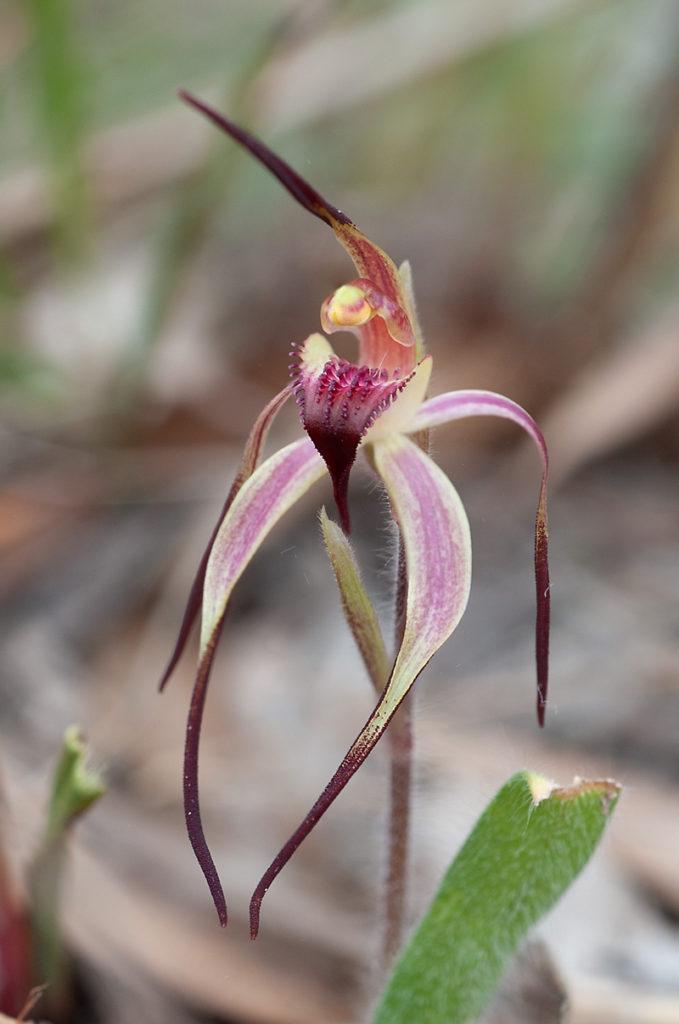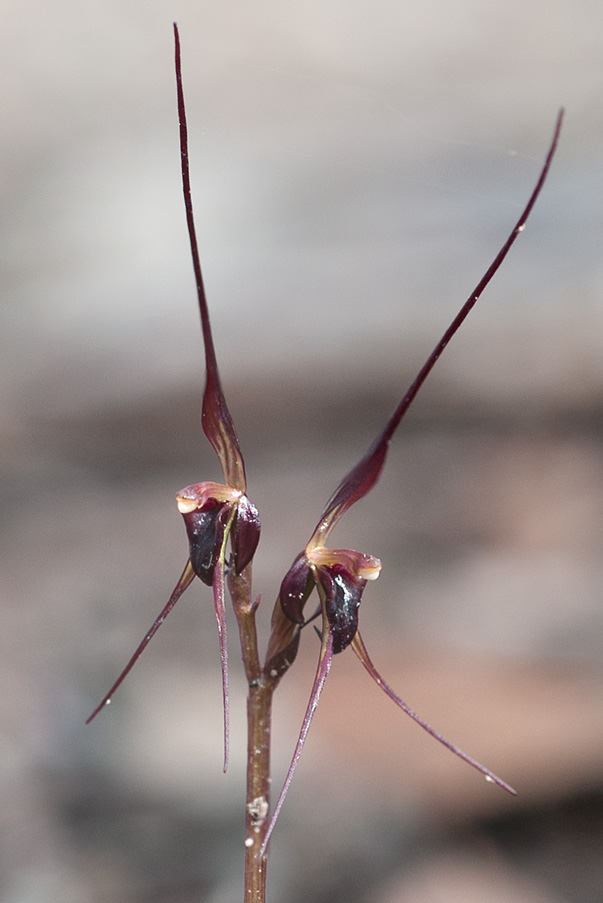Tasmanian Native Orchids
About Tasmanian Orchids
Tasmania has around 196 different native orchid species but changes to nomenclature constantly occur so this figure varies. Over 60 are endemic – only found in Tasmania. They represent a significant part of the flora of Tasmania and are fascinating plants for many reasons.
Many orchid species have short flowering times and can be difficult to locate in the field. Some have very local distribution meaning they occur in just a few small spots over a wide area. Outside of the Spring and Summer flowering species, many are green, brown and other muted colours so tend to blend in with the surrounding vegetation. Finding them can be a challenge. While there is a large ‘flowering flush’ in the Spring and early Summer, at least one or more species can be found at any time of the year within a 30-minute drive of Hobart.
Fortunately, Tasmanian orchids are now well documented and a number of identification tools are available – see the reference list below.
Whats flowering around Hobart?
(The following notes are based mainly on what I see around Hobart and are by no means an exhaustive list of what might be found flowering in Tasmania)
Spring 2024
What a contrast to 12 months ago! lush vegitation and a great showing of orchids from all the usual sites around Hobart is the order of the day this Spring.
September saw the Diuris (pardina), Blues Fairies (Pheladenia deformis), Pink Fingers (caladenia carnia) and early Sun Orchids (Thelymitra species) at Peter Murrel Reserve, Waverly Floral Park, many spots in the Mt Wellington Foot Hills include the Huon Road, Waterworks, west of the Cascade Brewery and plenty of other sites. The EAstern Shore has been very productive too.
As October arrived later flowering “Spider” Canadenias such as echidnachila and clavigera appeared. The echidnachila – Fawn Spider Orchid – were larger and more robust than usual and we saw some interesting greenish shades. The Pottery Road area was the place to be for these.
The very scarce Caladenia filamatosa which had been robbed from its site right on the road verge in the Sandford area and thought to have disappeared made an appearance which is very pleasing. The very few plants have survived and flowered again this year in early October
A striking display of Sun orchids especially on the Eastern Shore appeared during October but as always happens, the windy and often overcast weather did make finding open flowers which could be photographed a challenge at times.
Diary Notes for Previous Months
See the Whats Flowering page for previous months flowering notes
Tasmanian Native Orchid Website
My site records images of Tasmanian native orchids captured in the field mainly around Hobart but also from a few sites further afield on the East Coast and far South East. Species are displayed alphabetically by genus. This is a long-term project to record photographs taken in the field so check back again for more images.
These are amateur observations simply based on my own experience in the bush and do not claim to be botanically correct.
Each month I update the site with details of the latest observations.
All photographs are the author’s own work and copyright applies but if you have any interest in any of these images let me know.
Useful links for orchid hunters
- Tasmanian Natural Values Atlas
- Tasmanian Orchids Facebook Page
- The Tasmanian Orchids. Jones, Wapstra, Tonelli, Harris. Melbourne Uni Press 1999. ISBN 0 522 84851 6. Hard cover, 317 pages. Out of print but worth searching for
- Tas Orchids App (Iphone only). An excellent field guide with 208 different species. $4.99 from the Apple app store.


